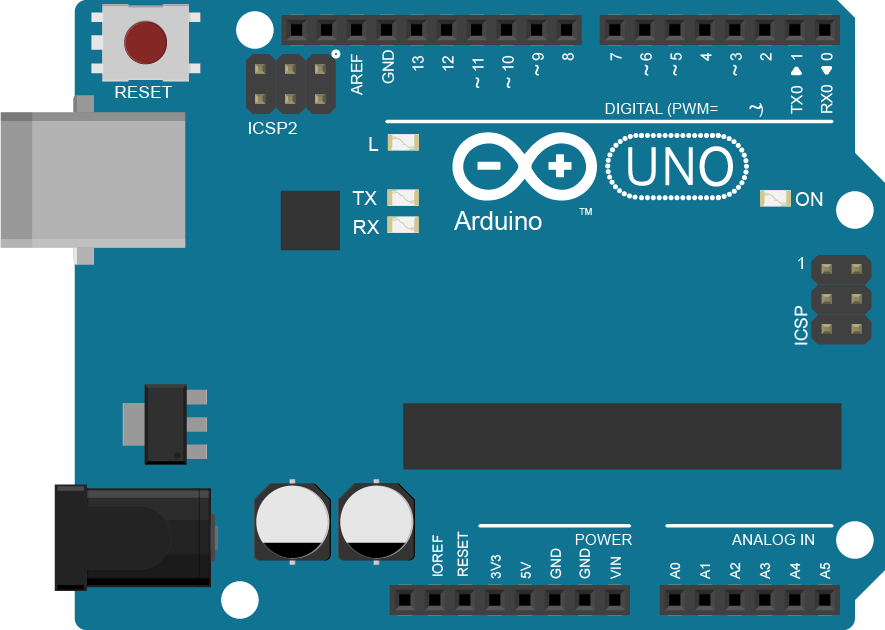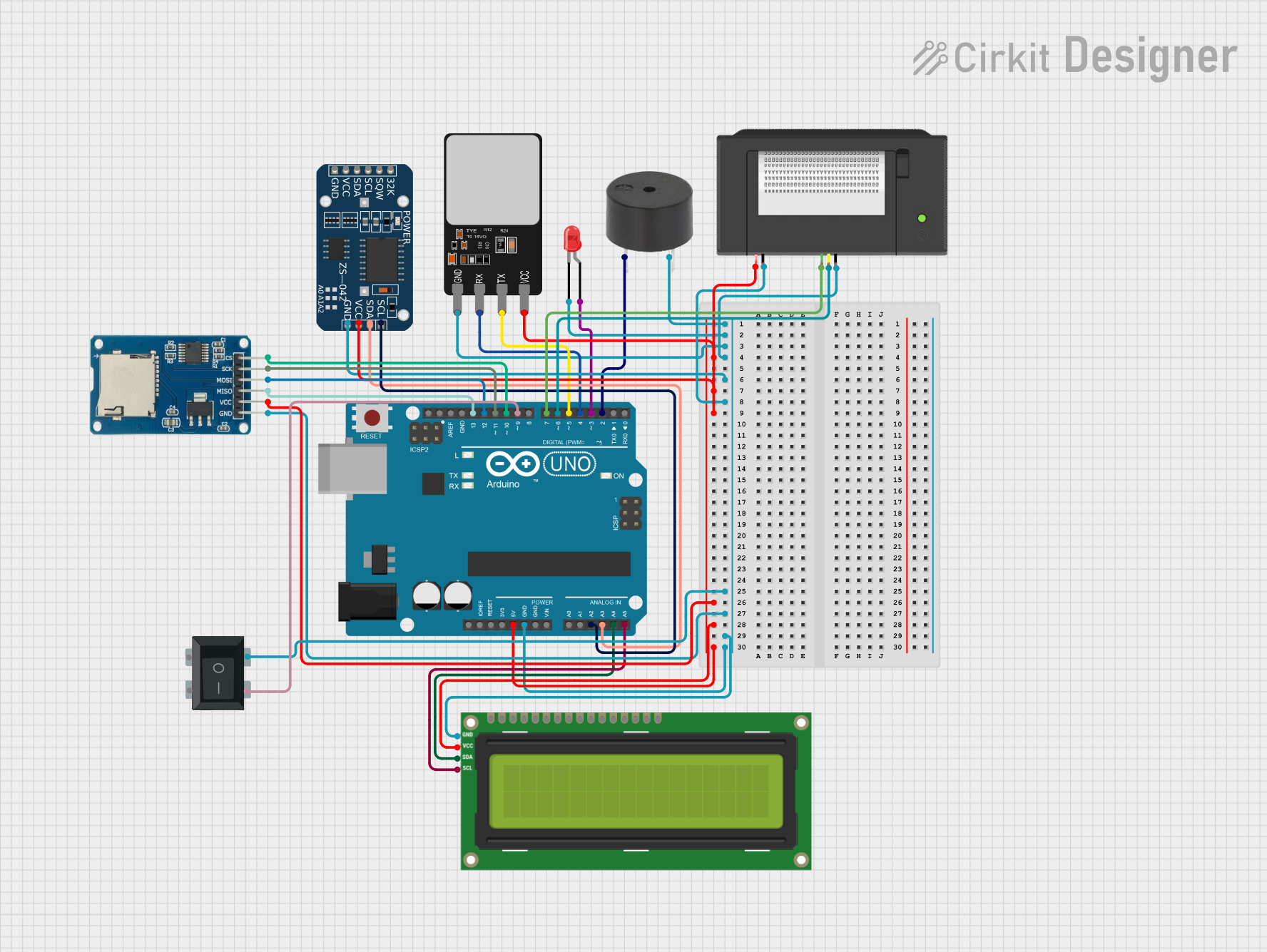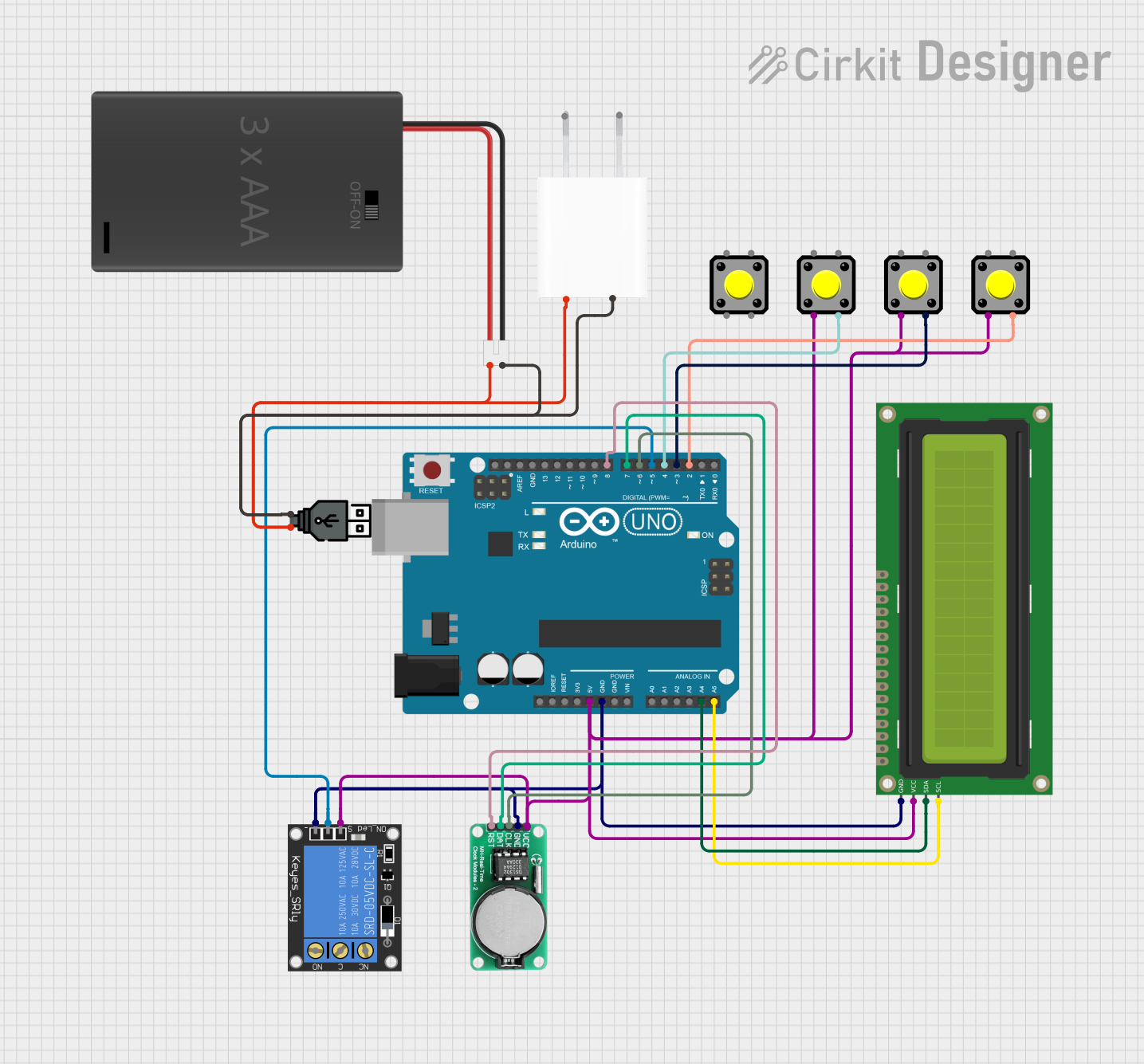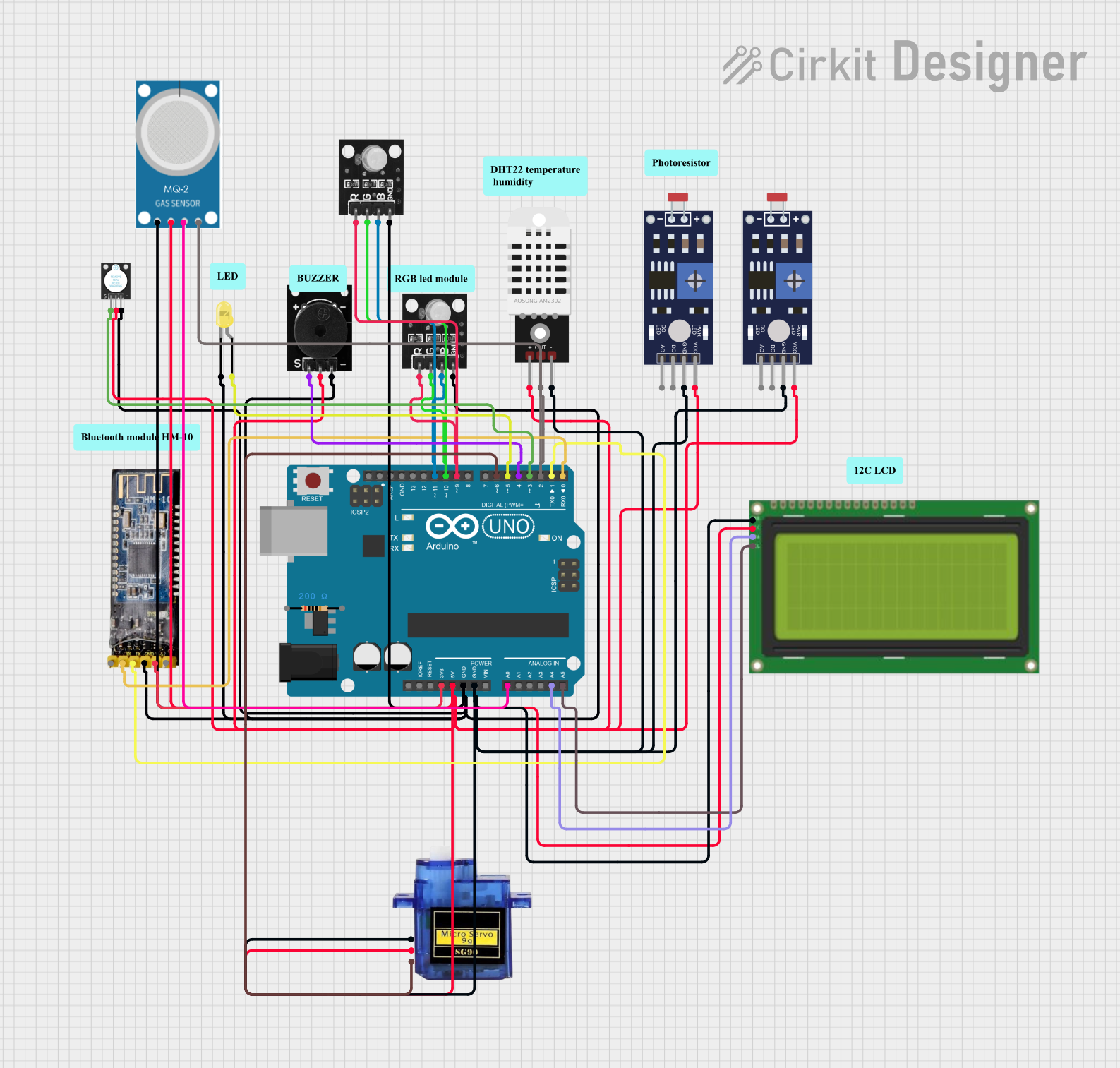
How to Use Arduino UNO: Examples, Pinouts, and Specs

 Design with Arduino UNO in Cirkit Designer
Design with Arduino UNO in Cirkit DesignerIntroduction
The Arduino UNO, manufactured by XIAO, is a microcontroller board based on the ATmega328P. It is one of the most popular and versatile development boards, widely used for building digital devices and interactive objects that can sense and control the physical world. The board is designed to be beginner-friendly while offering advanced features for experienced users.
Explore Projects Built with Arduino UNO

 Open Project in Cirkit Designer
Open Project in Cirkit Designer
 Open Project in Cirkit Designer
Open Project in Cirkit Designer
 Open Project in Cirkit Designer
Open Project in Cirkit Designer
 Open Project in Cirkit Designer
Open Project in Cirkit DesignerExplore Projects Built with Arduino UNO

 Open Project in Cirkit Designer
Open Project in Cirkit Designer
 Open Project in Cirkit Designer
Open Project in Cirkit Designer
 Open Project in Cirkit Designer
Open Project in Cirkit Designer
 Open Project in Cirkit Designer
Open Project in Cirkit DesignerCommon Applications and Use Cases
- Prototyping and testing electronic circuits
- Building IoT (Internet of Things) devices
- Robotics and automation projects
- Sensor-based systems (e.g., temperature, motion, light sensing)
- Educational purposes for learning programming and electronics
Technical Specifications
The Arduino UNO is equipped with a range of features that make it suitable for a variety of applications. Below are its key technical details:
General Specifications
| Parameter | Value |
|---|---|
| Microcontroller | ATmega328P |
| Operating Voltage | 5V |
| Input Voltage (recommended) | 7-12V |
| Input Voltage (limit) | 6-20V |
| Digital I/O Pins | 14 (6 PWM outputs) |
| Analog Input Pins | 6 |
| DC Current per I/O Pin | 20 mA |
| Flash Memory | 32 KB (0.5 KB used by bootloader) |
| SRAM | 2 KB |
| EEPROM | 1 KB |
| Clock Speed | 16 MHz |
| USB Connection | Type-B |
| Dimensions | 68.6 mm x 53.4 mm |
Pin Configuration and Descriptions
The Arduino UNO has 28 pins, including digital, analog, power, and communication pins. Below is a detailed description of the pin configuration:
Digital Pins
| Pin Number | Functionality |
|---|---|
| 0 (RX) | Serial Receive (UART) |
| 1 (TX) | Serial Transmit (UART) |
| 2-13 | General-purpose digital I/O |
| 3, 5, 6, 9, 10, 11 | PWM output pins |
Analog Pins
| Pin Number | Functionality |
|---|---|
| A0-A5 | Analog input (10-bit resolution) |
Power Pins
| Pin Name | Functionality |
|---|---|
| VIN | Input voltage to the board |
| 5V | Regulated 5V output |
| 3.3V | Regulated 3.3V output |
| GND | Ground |
| RESET | Resets the microcontroller |
Communication Pins
| Pin Name | Functionality |
|---|---|
| SDA | I2C Data Line |
| SCL | I2C Clock Line |
| SPI (10-13) | SPI Communication |
Usage Instructions
The Arduino UNO is easy to use and program. Follow the steps below to get started:
Step 1: Setting Up the Arduino IDE
- Download and install the Arduino IDE from the official website.
- Connect the Arduino UNO to your computer using a USB cable.
- Open the Arduino IDE, go to Tools > Board, and select Arduino UNO.
- Under Tools > Port, select the port to which the Arduino UNO is connected.
Step 2: Writing and Uploading Code
- Write your code in the Arduino IDE. For example, the following code blinks an LED connected to pin 13:
// This program blinks an LED connected to pin 13 of the Arduino UNO.
// The LED will turn on for 1 second and off for 1 second in a loop.
void setup() {
pinMode(13, OUTPUT); // Set pin 13 as an output pin
}
void loop() {
digitalWrite(13, HIGH); // Turn the LED on
delay(1000); // Wait for 1 second
digitalWrite(13, LOW); // Turn the LED off
delay(1000); // Wait for 1 second
}
- Click the Upload button in the Arduino IDE to upload the code to the board.
- The onboard LED (connected to pin 13) will start blinking.
Important Considerations and Best Practices
- Always check the input voltage to ensure it is within the recommended range (7-12V).
- Avoid drawing more than 20 mA from any I/O pin to prevent damage to the microcontroller.
- Use external pull-up or pull-down resistors for stable digital input signals.
- When connecting sensors or modules, ensure proper grounding to avoid noise or erratic behavior.
Troubleshooting and FAQs
Common Issues and Solutions
The Arduino UNO is not detected by the computer.
- Ensure the USB cable is properly connected and functional.
- Check if the correct port is selected in the Arduino IDE under Tools > Port.
- Install or update the USB drivers for the Arduino UNO.
Code upload fails with an error message.
- Verify that the correct board is selected under Tools > Board.
- Ensure no other program is using the same COM port.
- Press the RESET button on the board before uploading the code.
The connected components are not working as expected.
- Double-check the wiring and connections.
- Ensure the components are compatible with the Arduino UNO's voltage and current ratings.
- Use a multimeter to test for continuity and proper voltage levels.
FAQs
Can I power the Arduino UNO with a battery?
- Yes, you can power the board using a 9V battery connected to the VIN and GND pins.
What is the maximum current the Arduino UNO can supply?
- The 5V pin can supply up to 500 mA when powered via USB, and the 3.3V pin can supply up to 50 mA.
Can I use the Arduino UNO for wireless communication?
- Yes, you can use wireless modules like Bluetooth (HC-05) or Wi-Fi (ESP8266) with the Arduino UNO.
By following this documentation, you can effectively use the Arduino UNO for a wide range of projects and applications.